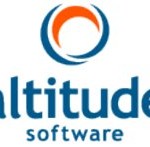 Altitude Software, a global provider of omnichannel solutions to deliver great customer experiences, today announced that FRONTLINERS Contact Center Outsourcing, a major customer service provider in the Middle East, has implemented the latest Altitude Xperience release to ensure excellence in customer care delivery and handle the growth of its outsourcing operations in the Kingdom of Saudi Arabia.
Altitude Software, a global provider of omnichannel solutions to deliver great customer experiences, today announced that FRONTLINERS Contact Center Outsourcing, a major customer service provider in the Middle East, has implemented the latest Altitude Xperience release to ensure excellence in customer care delivery and handle the growth of its outsourcing operations in the Kingdom of Saudi Arabia.
FRONTLINERS supports businesses in their quest for superior customer service by significantly enhancing each customer interaction at any touch point. The Jeddah-based outsourcer today provides inbound and outbound services using state-of-the-art contact center technology that allows to field thousands of calls 24 hours a day, 7 days a week, with the highest levels of data security.
Addressing the largest outsourced customer service market in the GCC region
“Our extensive experience, sophisticated technology, talented team and insight into the local customers’ sentiment have allowed us to gain the trust of some of the most respected companies in the region,” said Shadi Yasser, FRONTLINERS Contact Centre Director “Locating our omnichannel contact centre in Jeddah is a strong asset as it gives us access to the largest outsourced customer service market in the GCC region, along with the opportunity to work with some of the fastest-growing businesses and most respected institutions in the Kingdom of Saudi Arabia.”
As such, FRONTLINERS’ customers today include prominent organisations such as BMW Group, Volkswagen, Hyundai, Renault, NESMA Airlines, DAMAC Properties, Allianz, Pfizer and MAGRABI hospitals. The outsourcing company handles various business campaigns daily on behalf of its customers including lead generation, inbound customer service, helpdesk, appointment scheduling, suggestion & complaints management, market research, surveys as well as client retention.
 With rapid year-over-year growth and a mission of keeping its contact center at the center of the customer experience, FRONTLINERS recognized the need to migrate its contact center towards the latest Altitude Xperience release to be in a position to efficiently handle new touchpoints like social media and web chat as well as benefit from Altitude’s IP switch, Altitude vBox, which is a free, complete, stable, and reliable IP switch for contact centers.
With rapid year-over-year growth and a mission of keeping its contact center at the center of the customer experience, FRONTLINERS recognized the need to migrate its contact center towards the latest Altitude Xperience release to be in a position to efficiently handle new touchpoints like social media and web chat as well as benefit from Altitude’s IP switch, Altitude vBox, which is a free, complete, stable, and reliable IP switch for contact centers.
Commenting on the technology used at the new Jeddah-based contact centre site, Shadi Yasser added: “with the latest Altitude Xperience release which is now live at our contact centre in Jeddah, Altitude Software continues to provide us with quantifiable benefits and ways to ensure that we are continually meeting and exceeding the expectations of our clients. The Altitude Software team has turned out to be a strategic partner in our projects and its solutions play an important role in our successful contact centre operations across the Kingdom of Saudi Arabia”.
FRONTLINERS takes advantage of several key capabilities of the latest Altitude customer interaction management platform, including:
- A unified communications customer engagement suite that supports all media channels, including social media, web chat, chatbot and apps.
- An Intelligent Router to answer, prioritise and intelligently route callers to available agents, and report on all inbound interactions
- A supervision tool which delivers comprehensive real-time monitoring and performance analysis for campaigns, agents and the omnichannel contact centre system itself.
- A gamification tool which empowers contact centre agents with information about individual and team performance in real time, motivating agents as they know in real time whether they are meeting the objectives or need to work harder.
“Altitude Xperience offers a number of competitive advantages for contact centre outsourcing companies and FRONTLINERS is taking a leading step forward to boost customer satisfaction on behalf of prominent organizations in KSA,” commented Riadh Boukhris, Altitude Software President Middle East & North Africa. “We are fully committed to their success in implementing world-class customer services to meet their business performance goals in the Kingdom.”


